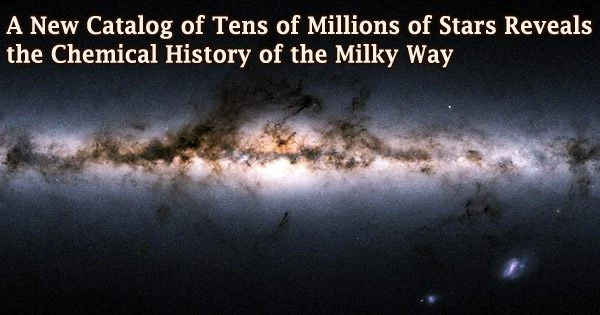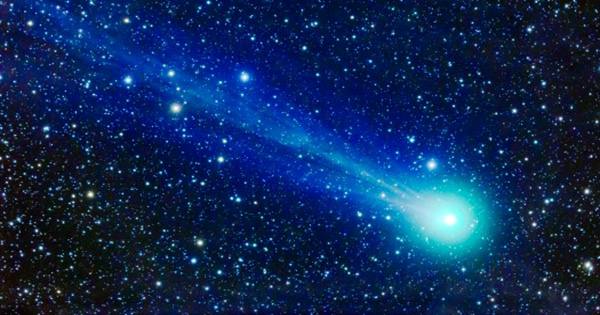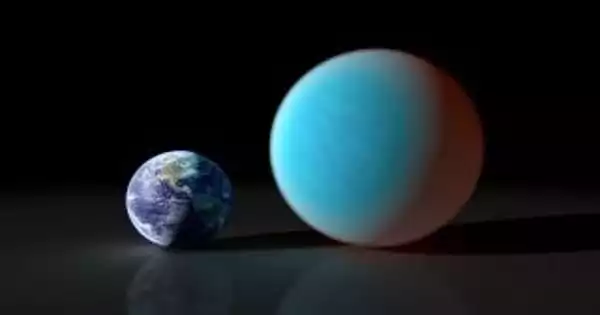Researchers from the University of Notre Dame and their partners from China and Australia have published a new sample catalog of more than 24 million stars that can be used to trace the chemical evolution of elements in the Milky Way Galaxy.
The study, which was just this month published in The Astrophysical Journal, accounts for about one hundredth of one percent of the Milky Way’s 240 billion or so stars. It is a significant accomplishment for Timothy Beers, the Grace-Rupley Professor of Physics at Notre Dame, who has dedicated the majority of his career to organizing and carrying out ever-larger surveys of stars in the field of galactic archaeology, which aims to understand the galaxy’s formation and chemical evolution.
In order to determine the abundances of heavy elements like iron, researchers used a novel method to measure the light from each star. They measured their ages, motions, and distances as well.
“The elemental abundances of individual stars trace the chemical enrichment of the Milky Way galaxy, from when it first began to form stars shortly after the Big Bang to the present,” Beers said.
“Combining this information with the stellar distances and motions allows us to constrain the origin of different components in the galaxy, such as the halo and disk populations,” he continued. “Adding age estimates puts a ‘clock’ on the process, so that a much more complete picture of the entire process can be drawn.”
The elemental abundances of individual stars trace the chemical enrichment of the Milky Way galaxy, from when it first began to form stars shortly after the Big Bang to the present. Combining this information with the stellar distances and motions allows us to constrain the origin of different components in the galaxy, such as the halo and disk populations. Adding age estimates puts a ‘clock’ on the process, so that a much more complete picture of the entire process can be drawn.
Timothy Beers
Beers and colleagues’ earlier spectroscopic study gave the data for the tens of thousands of stars that were used to calibrate the new method based on exact photometric readings.
The most recent study employed sizable photometric samples from the European Gaia satellite project and the Australian SkyMapper Southern Survey to calibrate estimates of metallicity.
Until recently, obtaining low- and medium-resolution spectra that could be examined to extract this information from them was the only way to obtain precise estimates of the abundance of heavy metals, such as iron, for a significant number of stars.
The procedure took a lot of time and effort. Because they were born early in the history of the universe and so reveal the genesis of elements in the periodic table, Beers is especially interested in stars with the lowest metallicities, which are highly metal-poor stars with iron abundances less than 1% that of the sun.
When Beers began his research in the early 1980s, there were only approximately 20 highly metal-poor stars known to science. With the addition of this new catalog, Beers’ “fossils of the night sky” now number over 500,000.
The new catalog, which contains more than 19 million dwarf and 5 million big stars, is anticipated to increase our understanding of the Milky Way’s formation in a number of ways, according to Beers.
These include describing the galactic thin/thick disks’ structures, the spiral galaxies’ structural elements, and the population of stars and globular clusters that surround the majority of disk galaxies and are collectively referred to as their stellar halo. The list of stars will also aid in locating the star trails left by dwarf galaxies and globular clusters that have undergone disruption.
In addition to Beers and graduate student Derek Shank at the University of Notre Dame, other collaborators include lead author Yang Huang of Yunnan University, China; Christian Wolf and Christopher A. Onken, Australian National University; Young Sun Lee, Chungnam National University, Korea; Haibo Yuan, Beijing Normal University, China; Huawei Zhang, Peking University, China; Chun Wang, Tianjin Normal University, China; and Jianrong Shi and Zhou Fan, Chinese Academy of Sciences.
Beers and Shank’s work on this project received support from grant 14-30152, Physics Frontier Center/JINA Center for the Evolution of the Elements (JINA-CEE), awarded by the U.S. National Science Foundation. Beers also received support from a 2019 PIFI Distinguished Scientist award from the Chinese Academy of Science.















